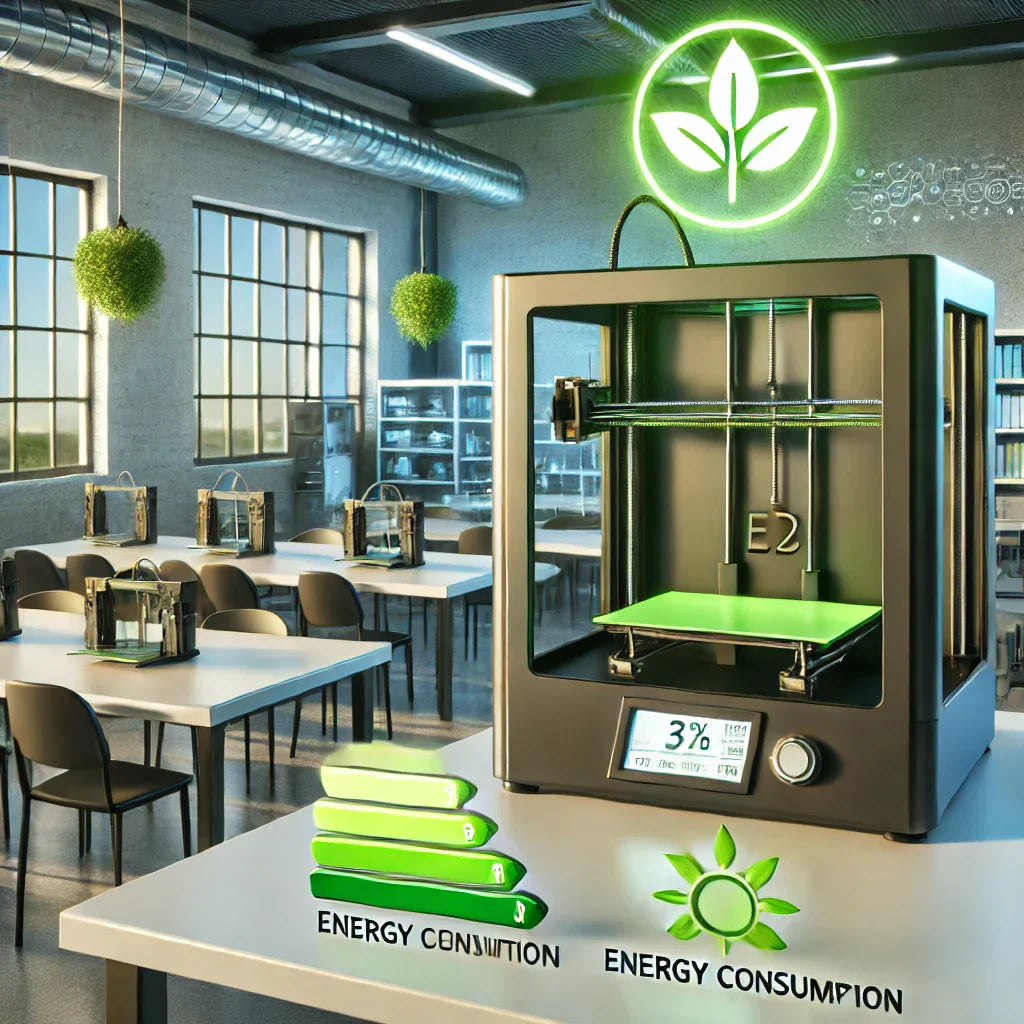Eco-Friendly 3D Printing: How to Reduce Waste and Print Sustainably

3D printing has revolutionized manufacturing, prototyping, and custom product creation. However, like any technology, it has environmental implications. From excessive plastic waste to high energy consumption, sustainability in 3D printing is a growing concern. Fortunately, there are ways to minimize the environmental footprint of 3D printing. Here’s how you can print more sustainably while reducing waste.

1. Use Biodegradable and Recycled Filaments
One of the most effective ways to make 3D printing eco-friendly is by choosing sustainable materials. Instead of traditional petroleum-based plastics like ABS, consider these alternatives:
-
PLA (Polylactic Acid): Derived from renewable sources like cornstarch or sugarcane, PLA is biodegradable under industrial composting conditions.
-
Recycled Filaments: Many companies now offer filaments made from post-consumer recycled plastics, reducing waste and promoting circular economy practices.
-
Bio-Composites: Filaments infused with wood, hemp, or algae fibers provide a biodegradable alternative while maintaining durability.

2. Implement a Filament Recycling Program
Filament waste is a major issue in 3D printing. Instead of discarding failed prints or excess material, consider these recycling solutions:
-
DIY Recycling: Desktop filament recyclers allow you to grind down failed prints and turn them into new filament.
-
Community Recycling Programs: Many 3D printing communities have collection initiatives for unused or failed prints to be repurposed.
-
Manufacturer Take-Back Programs: Some filament producers accept used spools and scraps for proper recycling.

3. Optimize Print Settings to Reduce Material Waste
Efficient printing techniques can help minimize filament usage and unnecessary waste:
-
Adjust Infill Percentage: Lowering infill density reduces material usage while maintaining structural integrity.
-
Use Support Structures Wisely: Minimize support material by optimizing model orientation or using soluble supports when necessary.
-
Print Only What You Need: Avoid unnecessary prototyping and test prints by refining designs digitally before printing.

4. Choose Energy-Efficient 3D Printers
3D printers can consume a significant amount of electricity, especially high-temperature machines. To reduce energy consumption:
-
Use Energy-Efficient Printers: Look for models with energy-saving modes or lower power consumption.
-
Optimize Print Temperature: Adjust temperature settings to the lowest effective level for filament extrusion.
-
Batch Printing: Print multiple objects in a single session to reduce overall power usage per print.

5. Repurpose and Upcycle Failed Prints
Even with careful planning, failed prints happen. Instead of throwing them away:
-
Turn Scraps into Art or Functional Objects: Use leftover filament for decorative projects or household items.
-
Shred and Reuse: Some shredders allow you to break down old prints for reuse in filament recyclers.
-
Donate Unused Prints: Schools and makerspaces often accept printed objects for educational purposes.

6. Support Sustainable 3D Printing Innovations
Many companies and researchers are working on making 3D printing more sustainable. You can contribute by:
-
Supporting Companies with Green Initiatives: Buy from brands that focus on sustainability in their materials and production processes.
-
Exploring Alternative Materials: New biodegradable or compostable filaments are being developed regularly.
-
Participating in Eco-Friendly Projects: Join open-source sustainability initiatives that promote green 3D printing practices.

7. How 3D Printing is Helping with Sustainable Construction
The construction industry is one of the largest contributors to global carbon emissions and material waste. However, 3D printing technology is transforming the way buildings are designed and constructed, making the process more sustainable. Here’s how:
7.1 Reduction in Material Waste
Traditional construction methods generate a significant amount of waste due to inefficient material usage. 3D printing minimizes waste by using only the necessary amount of material, thanks to precision layering techniques. This results in:
-
Less reliance on excess cement, wood, or steel.
-
A decrease in construction debris and landfill waste.
-
More cost-efficient building projects.
7.2 Use of Eco-Friendly Materials
Advancements in 3D printing have enabled the use of sustainable materials in construction, such as:
-
Recycled Concrete: Old concrete is crushed and reused to create 3D-printed structures.
-
Clay and Mud Composites: Locally sourced materials reduce transportation emissions and enhance eco-friendliness.
-
Bio-Based Filaments: Some experimental projects use biopolymers and plant-based binders to create durable, biodegradable structures.
7.3 Energy Efficiency and Reduced Carbon Footprint
3D-printed buildings require fewer resources to produce, leading to lower energy consumption:
-
Automated Construction: Reduces the need for heavy machinery, lowering fuel consumption.
-
Optimized Designs: Structures can be printed with insulation-optimized layers, reducing the need for artificial heating and cooling.
-
Solar and Smart Integration: Some 3D-printed buildings incorporate solar panels and energy-efficient systems for long-term sustainability.
7.4 Faster and More Cost-Effective Housing Solutions
3D printing allows for faster construction times, which is especially useful in tackling housing shortages and disaster relief efforts. Some benefits include:
-
Affordable Housing: Low-cost 3D-printed homes are being developed to address homelessness and provide shelter in underprivileged areas.
-
Disaster-Resilient Homes: Strong, weather-resistant designs can be quickly printed in regions affected by natural disasters.
-
Reduction in Labor Costs: Automation reduces the need for extensive manual labor while ensuring precision in construction.
7.5 Innovations in Sustainable Architecture
Architects and engineers are using 3D printing to explore new, sustainable designs that were previously impossible with conventional methods. Examples include:
-
Organic and Nature-Inspired Structures: Curved, energy-efficient designs inspired by nature optimize airflow and reduce heating/cooling needs.
-
Self-Sustaining Buildings: Some experimental designs incorporate water collection and energy storage systems for off-grid living.
-
Urban Sustainability Projects: Cities are experimenting with 3D-printed urban furniture, eco-friendly bridges, and green infrastructure components.
Conclusion
Eco-friendly 3D printing is achievable with the right materials, mindful practices, and sustainable innovations. By using biodegradable filaments, recycling waste, optimizing print settings, and supporting energy-efficient solutions, you can significantly reduce the environmental impact of 3D printing. In construction, 3D printing is paving the way for a greener future by reducing material waste, improving energy efficiency, and enabling faster, cost-effective housing solutions. As technology advances, sustainability in additive manufacturing will continue to improve, making it easier for makers and businesses to print responsibly.
Are you using any eco-friendly practices in your 3D printing projects? Share your experiences in the comments below!








